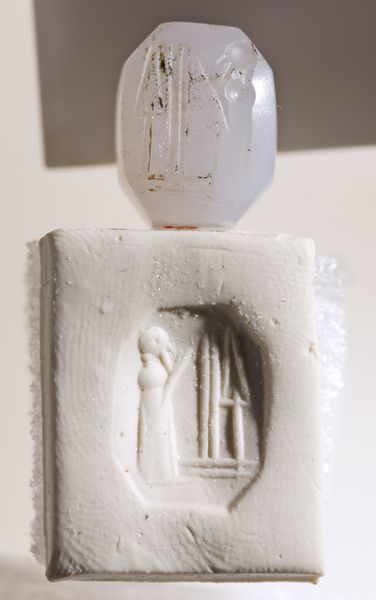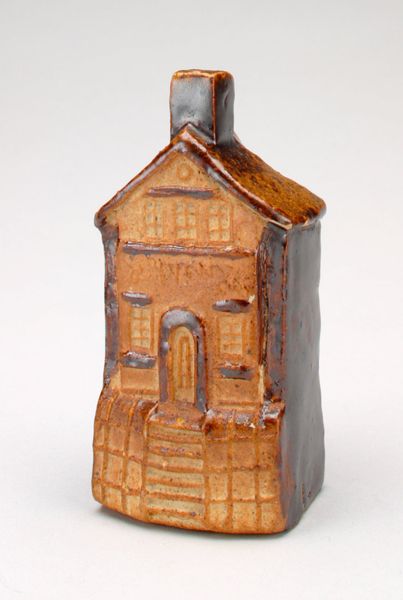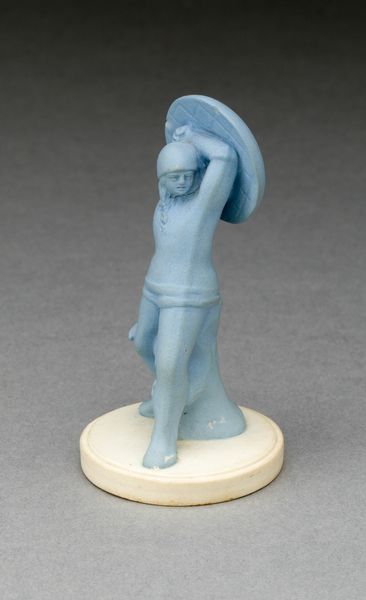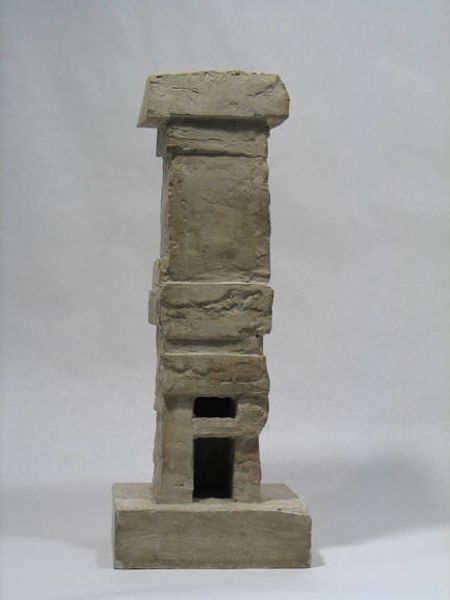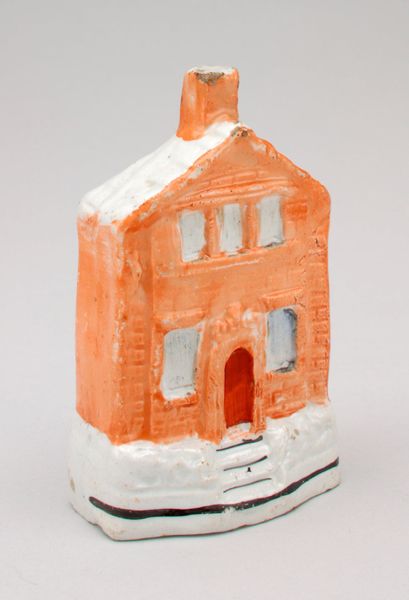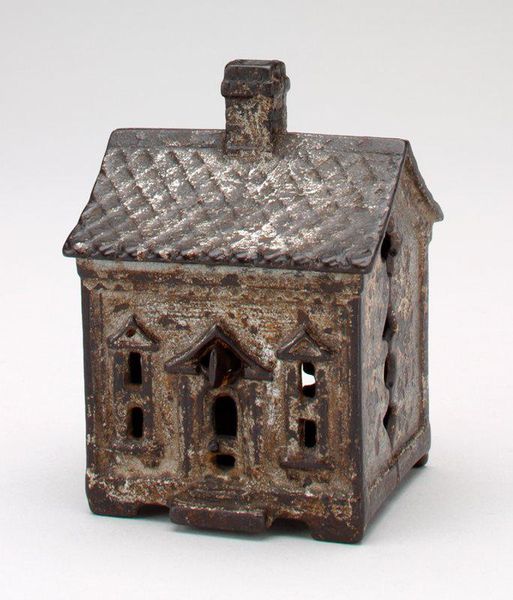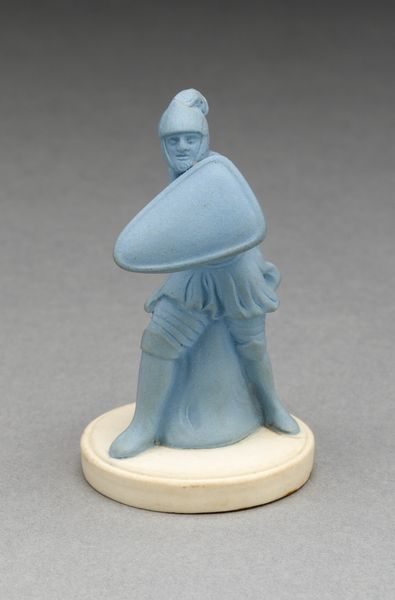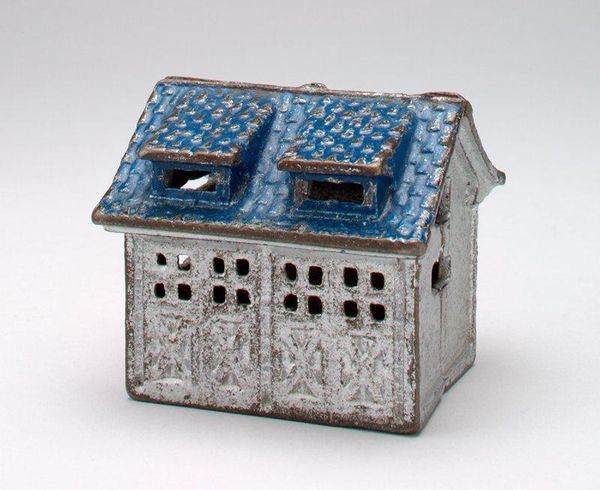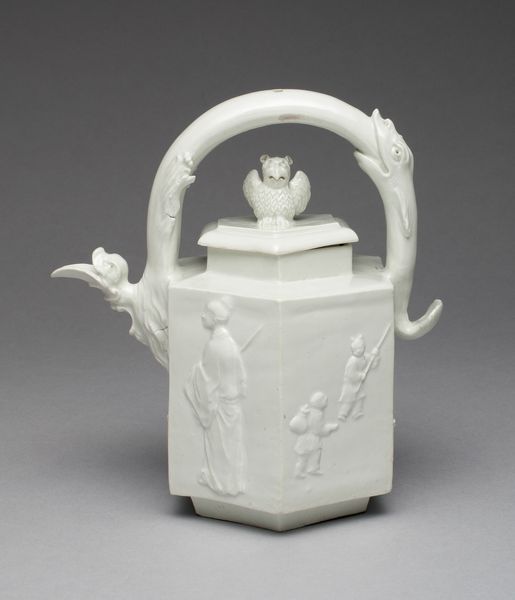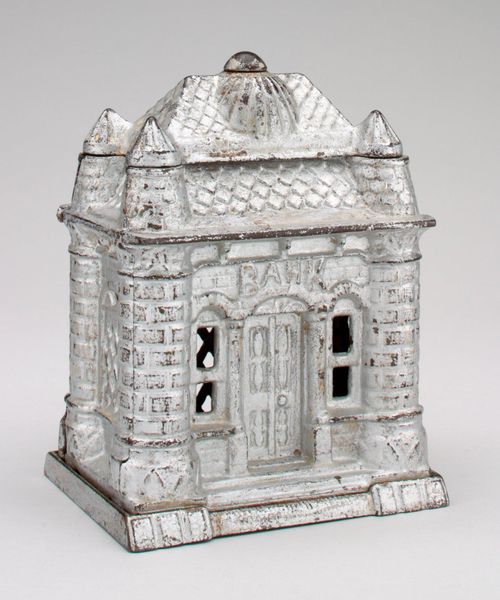
ceramic, sculpture
#
medieval
#
ceramic
#
sculpture
#
decorative-art
Dimensions: 7 × 3.2 × 3.5 cm (2 3/4 × 1 1/4 × 1 3/8 in.)
Copyright: Public Domain
Curator: This lovely piece is a ceramic sculpture, titled "Chess Piece: Rook," created around the 19th century by the Wedgwood Manufactory. Editor: It’s so delicate. That pastel blue is both calming and a bit melancholy, isn’t it? Like a fairytale tower, but one that’s perhaps seen better days. I am fascinated by how materials convey mood; Wedgwood porcelain is synonymous with high-society aesthetics, which can shift depending on socioeconomic climates and labor practices. Curator: Indeed, and think about the symbolic weight! The rook represents defense, strength, a stronghold. But here, it's rendered in this delicate ceramic, transforming that concept into something almost…precious. What does it say about the power we project onto these symbols of war and strategy when presented in such a way? Editor: The medium inherently alters the message. Making this out of ceramic undermines the assumed aggressive associations linked with war; its presence in the decorative-arts displays status, craft, and careful handling. I'd be interested in analyzing similar pieces made of wood, glass, metal, or different materials. It's hard not to speculate about the artist’s process of using plaster to obtain texture. Curator: And this choice, perhaps, underscores the commercial aspect of Wedgwood at that time? Creating emblems of status and luxury more so than instruments of conflict. Although, aren’t chess pieces miniature monuments themselves? Editor: Right! Especially given Wedgwood’s commercial enterprise; these ornamental miniatures gave the upwardly-mobile a way to materially align with elite aesthetics, at a lower pricepoint. We might ask what these particular objects signified to the owner. Curator: So, it moves beyond the individual object itself and reflects an entire culture and their aspiration— Editor: It certainly begs that question, and reveals shifts within both consumer cultures and our historical perceptions of war. Curator: Thinking about how a familiar symbol becomes something more—perhaps, also, something less—reveals the powerful dialogue between cultural ideals and historical memory. Editor: Well, I’ll be looking for more Wedgwood wares to examine, and analyzing their relation to process and socioeconomic status!
Comments
No comments
Be the first to comment and join the conversation on the ultimate creative platform.

